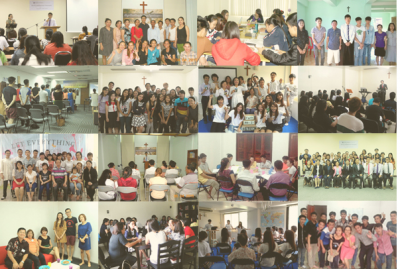Southeast Asia Proposes Guideline to Craft Life-Impacting Sermons

As more attention is being placed to prepare life-giving sermons to impact congregants towards eventual commitment as members of the church, OA SEA General Office proposes a guideline recently which serves to support ministers in crafting sermons that preach forth the Gospel of Jesus Christ and Kingdom of God boldly and without hindrance.
In an effort to lead non-Christians to come to faith and Christians towards deeper relationship with God, preparation for every sermon to be preached during every service is very crucial as every message delivered has potential to change the life of a person forever. As such, the following guideline is proposed for OA SEA ministers to consider adopting during their sermon preparations:
1. Pray and Meditate on the Text Deeply
The first step to begin sermon preparation is undoubtedly time spent in prayer, for the Holy Spirit is our greatest Teacher. Spend time reading the passage that is chosen to preach on over and over again. Pray through the passage. Seek God to lead you towards a deeper understanding of the text and to bring your life into conformity with the meaning of the text.
2. Study the Text Closely
Examine the text in great detail. Study the background of the text and genre that the text belongs to. Discover the literary structure. Trace the flow of the argument. Keep raising questions about the text and find answers to them. Look up the meaning of difficult words or phrases, and observe if there are any repetitive words or antonyms that catch your attention. Compare different Bible translations to identify areas that may be of significance to the particular text that is being studied. Recall in prayer of the sermons that were heard and meditated previously that may connect to the text. Only consult commentaries and other resources towards the end of your study to allow sufficient time for you to personally interact with the text.
3. Prepare a Sermon Outline
Identify and summarize the main point of the text. If you can't summarize it in one sentence, then more study ought to be done. Structure the sermon that communicates this main point in a simple and memorable way. Your sermon outline should give your congregation something that serves as "memory markers", a way to easily understand the point of the text and easily follow the sermon.
4. Think Carefully about Application
Think about how the different points of the sermon apply to people in different spiritual states: Christians and non-Christians, the spiritual hungry and the ignorant ones, the legalistic and those who overly abuses God's grace. Think about how your sermon applies to people in different stages of life, like parents, children, students, working adults and seniors. And think about how the points of the sermon apply to different spheres of life: the church, the home, the workplace, and public life.
5. Write Out the Sermon Transcript
Write out the body of the sermon in full text. By going through this process, you will give specific thought beforehand to what you're actually going to say during the time for sermon.
6. Add Essentials to Enhance Sermon Delivery
Add appropriate illustrations according to the local situation, an introduction, and a conclusion. While the meat of your sermon is far more important, introductions, conclusions, and illustrations help your congregants to see how the text is connected with their daily lives.
Through adopting the said guideline, may God bless the efforts of OA SEA ministers to craft sermons that will impact the lives of many to come to know Christ and commit to carry the Great Commission to the ends of the earth.



